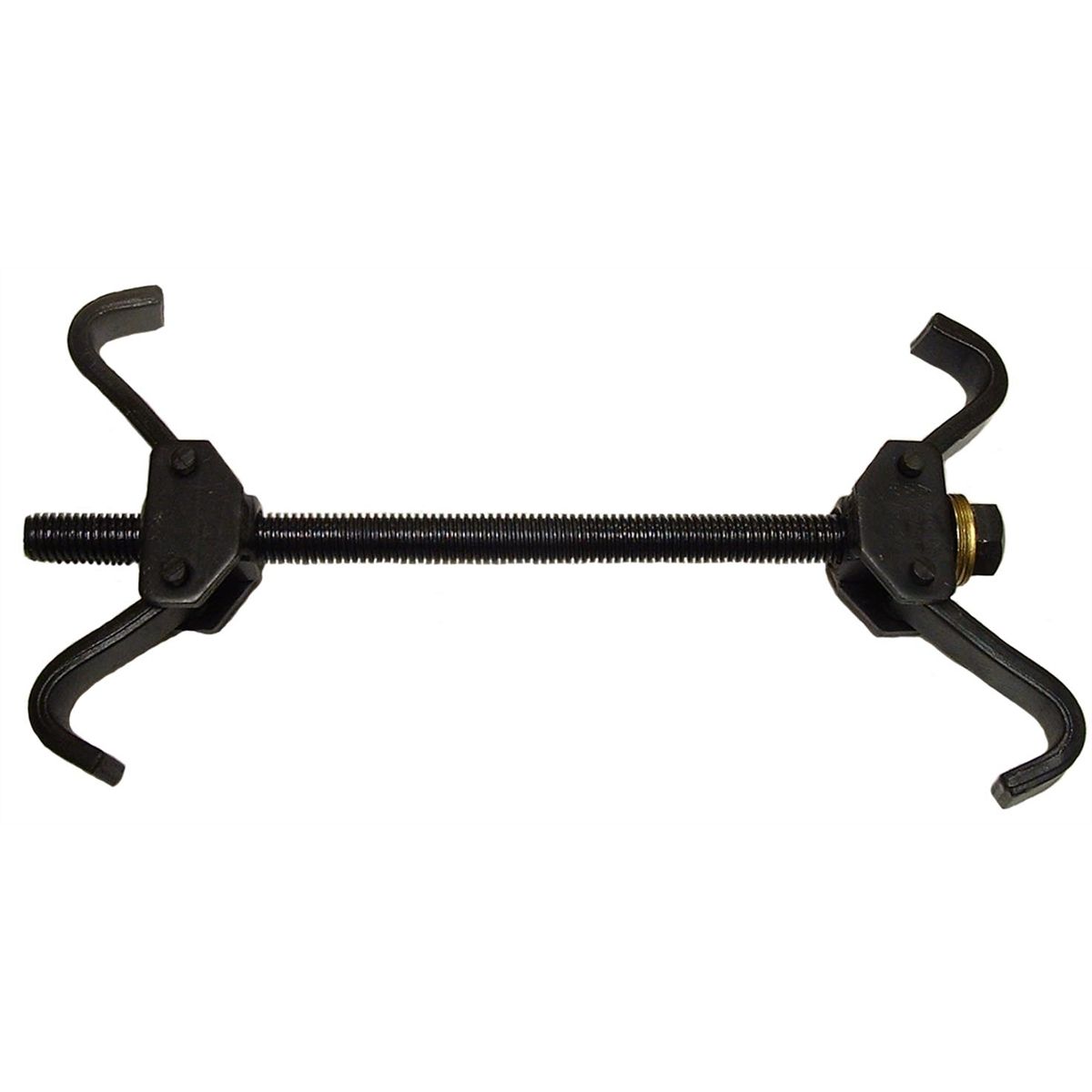In the realm of home repairs, tackling tasks that involve coil springs can be daunting without the right tools. Whether you’re replacing a spring in your car’s suspension or repairing a household appliance, the prospect of compressing a spring without specialized equipment may seem like an insurmountable challenge. However, with the right knowledge and techniques, you can safely and effectively compress coil springs without the need for costly tools. In this comprehensive guide, we’ll delve into the world of coil springs, provide step-by-step instructions, and uncover the secrets to successful spring compression without tools.

Image: www.toolsource.com
Understanding Coil Springs: A Foundation for Success
Coil springs are ubiquitous in our daily lives, serving as essential components in everything from vehicles to furniture and even electronic devices. Their unique ability to store and release energy makes them ideal for absorbing shock, providing support, and enabling motion. Before embarking on the task of compressing a spring, it’s crucial to understand its basic properties and safety considerations.
Coil springs come in various sizes, shapes, and materials, each designed for specific applications. The most common types of coil springs are cylindrical in shape, with tightly wound coils that create a helical structure. These springs are characterized by their stiffness, which determines the amount of force required to compress them.
When compressing a coil spring, it’s essential to adhere to safety guidelines to minimize the risk of accidents. Always wear appropriate safety gear, including gloves and eye protection. Ensure the area where you’re working is well-ventilated and free from obstacles or distractions. Lastly, be aware of the potential for the spring to recoil unexpectedly if not properly secured.
Step-by-Step Guide to Compressing Coil Springs without Tools
With the necessary safety precautions in mind, let’s dive into the step-by-step process of compressing a coil spring without tools:
1. Secure the Spring
Begin by securely fastening the spring to a stationary object using a strong rope or bungee cord. Loop the rope around the center of the spring and tighten it until the spring is firmly held in place. This step is crucial to prevent the spring from recoiling uncontrollably during compression.

Image: zjhenggang.en.made-in-china.com
2. Leverage Leverage: Using a Pipe or Rod
To compress the spring, you’ll need a lever that is strong enough to withstand the pressure. A metal pipe or a wooden rod of sufficient length will suffice. Position one end of the lever against the coils of the spring, near the point where it’s secured.
3. Apply Gradual Pressure
Slowly and gradually apply downward pressure to the lever, forcing the coils of the spring to compress. Continuously monitor the spring’s behavior and adjust the pressure accordingly to avoid over-compression or damage.
4. Utilize a Clamp or Vice for Assistance
If you encounter difficulty compressing the spring manually, don’t hesitate to seek assistance from a clamp or bench vise. Clamp one end of the spring securely in the vise’s jaws while applying pressure to the other end using a lever. This technique provides additional leverage and control.
5. Release Pressure Slowly
Once you’ve achieved the desired level of compression, slowly release the pressure on the spring while maintaining control. Allow the spring to gradually expand to its original shape, ensuring that it doesn’t recoil violently.
6. Double-Check Your Work and Secure the Spring
Before removing the securing rope, double-check the spring’s compression and ensure it aligns with your intended use. Tighten the rope again to maintain the spring’s compressed state before transferring or installing it.
Expert Insights and Actionable Tips for Stellar Results
To elevate your coil spring compression skills, incorporate these expert insights and actionable tips into your approach:
- Lubricate the Spring: Applying a small amount of lubricant to the coils of the spring can reduce friction and ease compression, especially for rusty or old springs.
- Protect the Spring and Surfaces: Place a piece of cloth or rubber between the lever and the spring’s coils to prevent damage or scratching.
- Use a Spring Compressor if Possible: While not technically “without tools,” using a dedicated spring compressor is highly recommended for larger or heavier springs or when precision is paramount.
- Seek Assistance When Needed: Don’t hesitate to ask for help if you encounter difficulties or feel overwhelmed during the compression process, safety should always be your top priority.
How To Compress Coil Spring Without Tool
Conclusion: Empowering DIY Enthusiasts with Knowledge and Skills
Mastering the art of compressing coil springs without tools is a testament to the power of knowledge and practical skills. Armed with the insights provided in this guide, you can confidently tackle various home repair projects and confidently manage spring-related tasks.
Remember to prioritize safety throughout the process and don’t underestimate the value of patience and precision. With practice and dedication, you’ll expand your DIY capabilities and unlock the satisfaction of accomplishing challenging tasks without relying on expensive tools. Embrace the learning journey, seek guidance when needed, and enjoy the fulfillment of successful spring compression without tools.